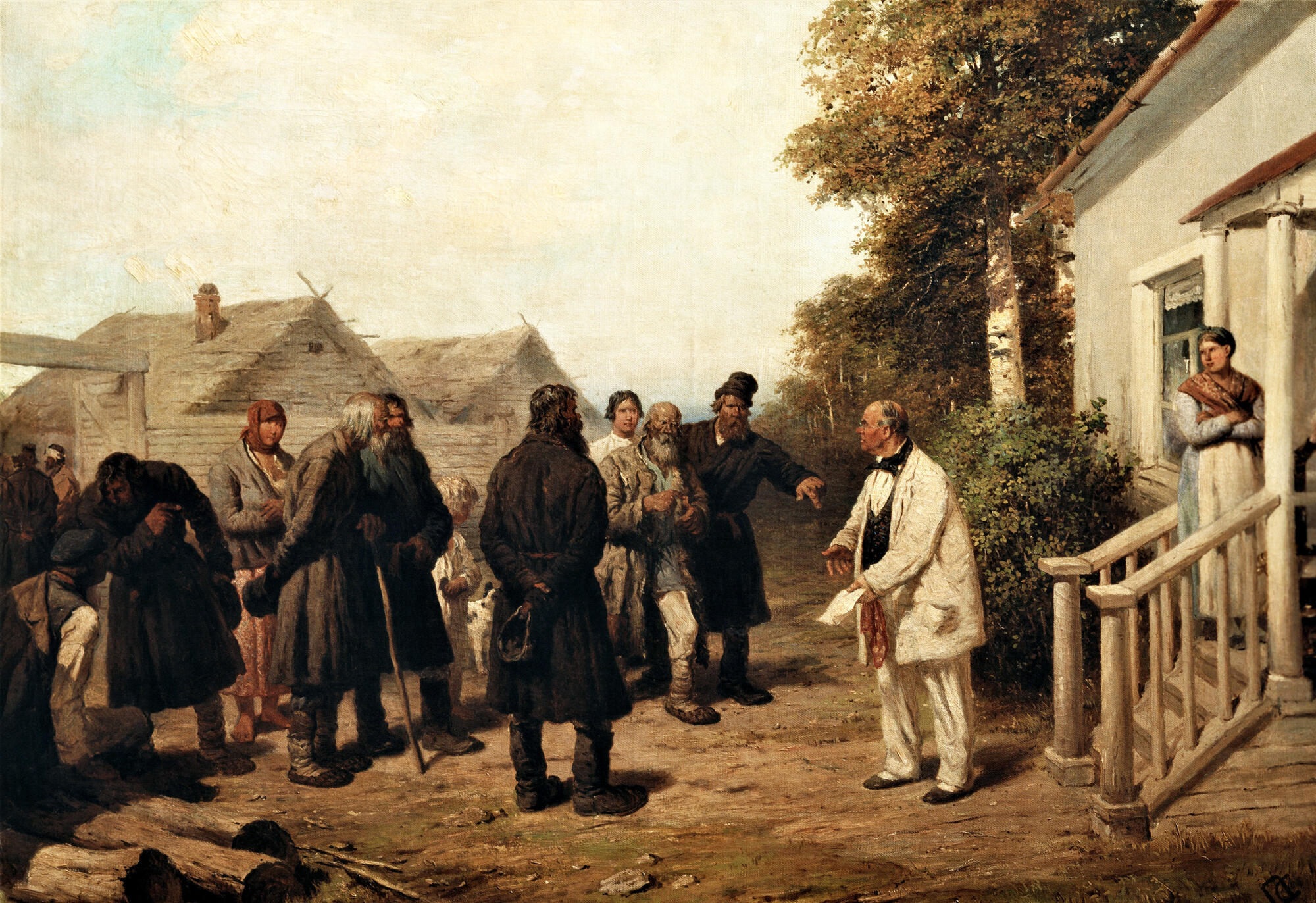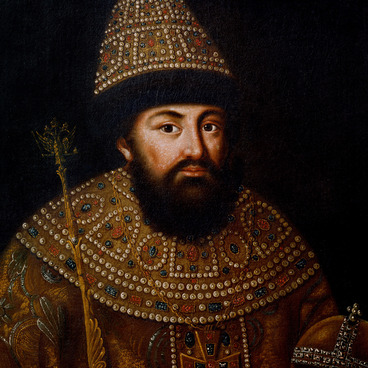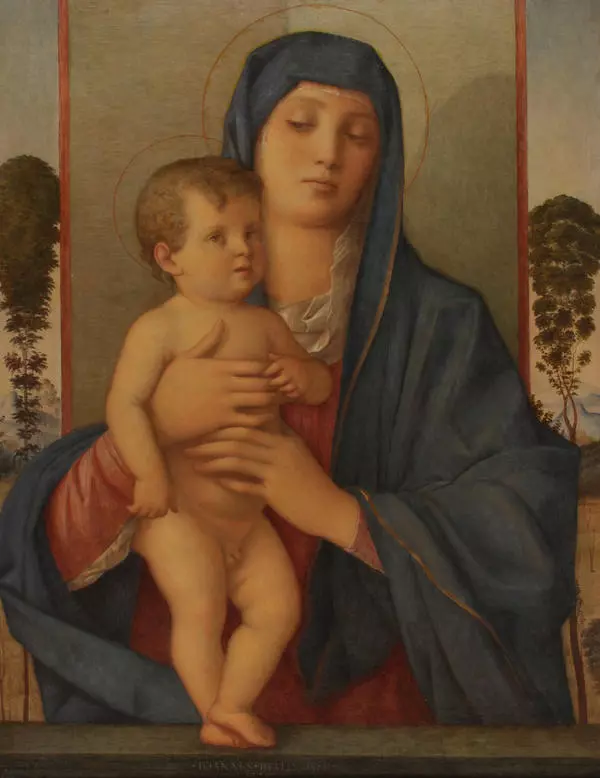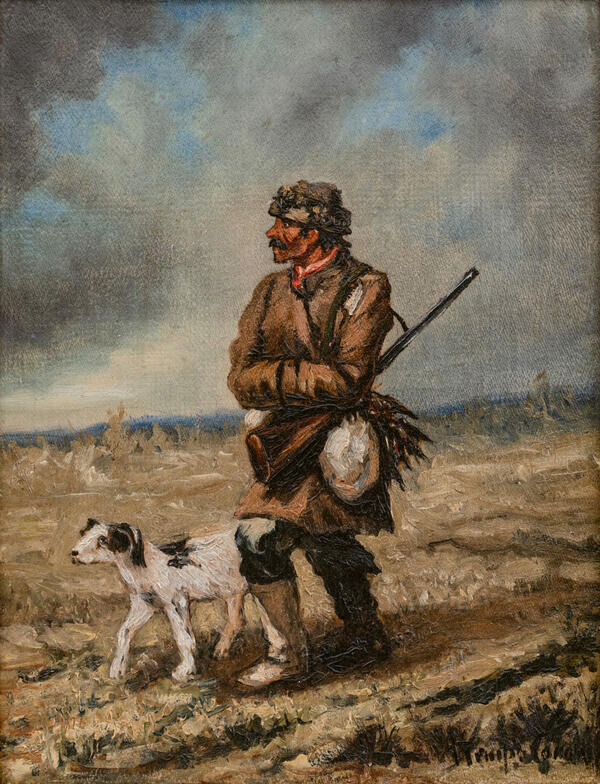Peter Sokolov was born into a prominent watercolorist family — named after his father, so they became complete namesakes. The boy’s uncle was the great Karl Bryullov, and it was at his insistence that he entered the Imperial Academy of Arts as a noncredit student. Sokolov became not only a master of watercolor, illustrator of Gogol, Turgenev, Nekrasov, and Tolstoy’s works, but also a famous painter of virtuoso hunting scenes and folklife paintings.
In the 1860s, at the time of Russia’s revolutionary situation, artists realized the need to bring art closer to people’s life. In contrast to academic art, with its religious and mythological subjects and ‘idyllic genres’, they turned to the realistic depiction of life, criticism, and denunciation of social inequality. Genre art, previously considered low, became a leading genre: it allowed telling about the experience of the oppressed and awakening public consciousness.
Pyotr Sokolov’s “The Land Dispute” is devoted to the Russian peasantry of the post-reform period. 1861 reform abolished serfdom but did not make life easier for the people. You had to pay for the use of the allotted land, which was often useless, either with your labor or money. The peasants had no right to refuse it for nine years — for many, and it brought only new difficulties. The heroes of Sokolov’s painting came to the manor place to defend their interests. But they were met not by the landlord himself, but his manager. His appearance and gesture make it clear that he does not sympathize with the supplicants and will defend the owner’s interests.
Depicting the peasants, the artist emphasizes their passivity and not yet awakened civic consciousness — he shows that only one of them decides to enter into a dispute. The most active member of the delegation is highlighted with an eloquent gesture; he is a rebel by nature because he is the only peasant who did not remove his hat.
The canvas’s main features are its narrative, straightforwardness, and revealing-demonstration style in interpreting the plot. The picture can cause an association with Nekrasov’s famous poem “Thoughts at a Vestibule”: “Tell me now of some abode, I have surely never seen such a place, where your sower and your guardian, where the Russian peasant did not moan?”
In the 1860s, at the time of Russia’s revolutionary situation, artists realized the need to bring art closer to people’s life. In contrast to academic art, with its religious and mythological subjects and ‘idyllic genres’, they turned to the realistic depiction of life, criticism, and denunciation of social inequality. Genre art, previously considered low, became a leading genre: it allowed telling about the experience of the oppressed and awakening public consciousness.
Pyotr Sokolov’s “The Land Dispute” is devoted to the Russian peasantry of the post-reform period. 1861 reform abolished serfdom but did not make life easier for the people. You had to pay for the use of the allotted land, which was often useless, either with your labor or money. The peasants had no right to refuse it for nine years — for many, and it brought only new difficulties. The heroes of Sokolov’s painting came to the manor place to defend their interests. But they were met not by the landlord himself, but his manager. His appearance and gesture make it clear that he does not sympathize with the supplicants and will defend the owner’s interests.
Depicting the peasants, the artist emphasizes their passivity and not yet awakened civic consciousness — he shows that only one of them decides to enter into a dispute. The most active member of the delegation is highlighted with an eloquent gesture; he is a rebel by nature because he is the only peasant who did not remove his hat.
The canvas’s main features are its narrative, straightforwardness, and revealing-demonstration style in interpreting the plot. The picture can cause an association with Nekrasov’s famous poem “Thoughts at a Vestibule”: “Tell me now of some abode, I have surely never seen such a place, where your sower and your guardian, where the Russian peasant did not moan?”





